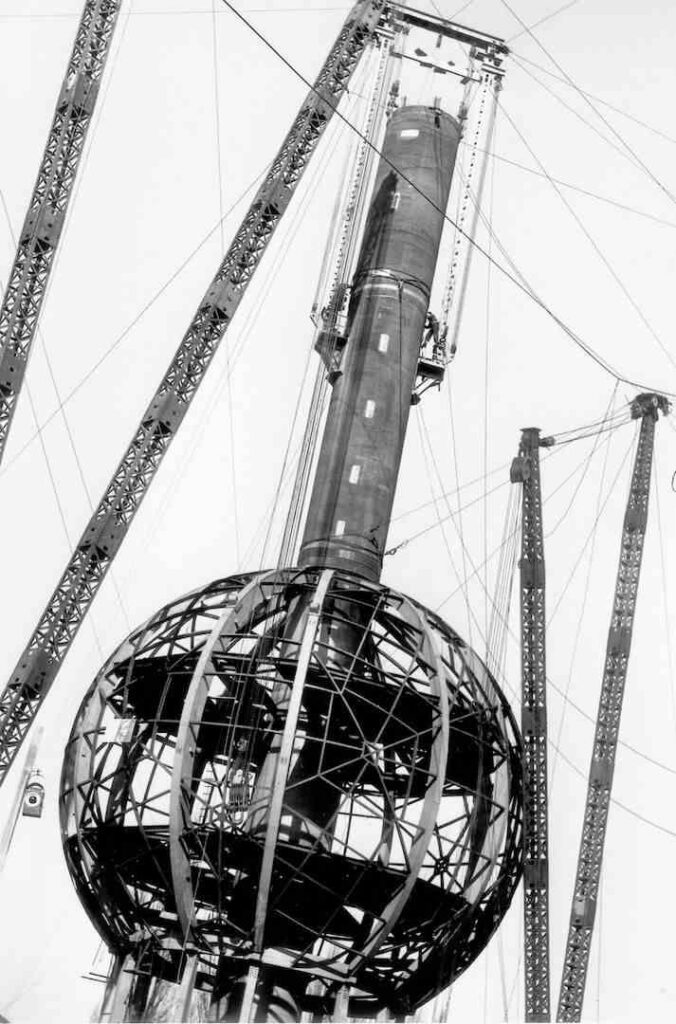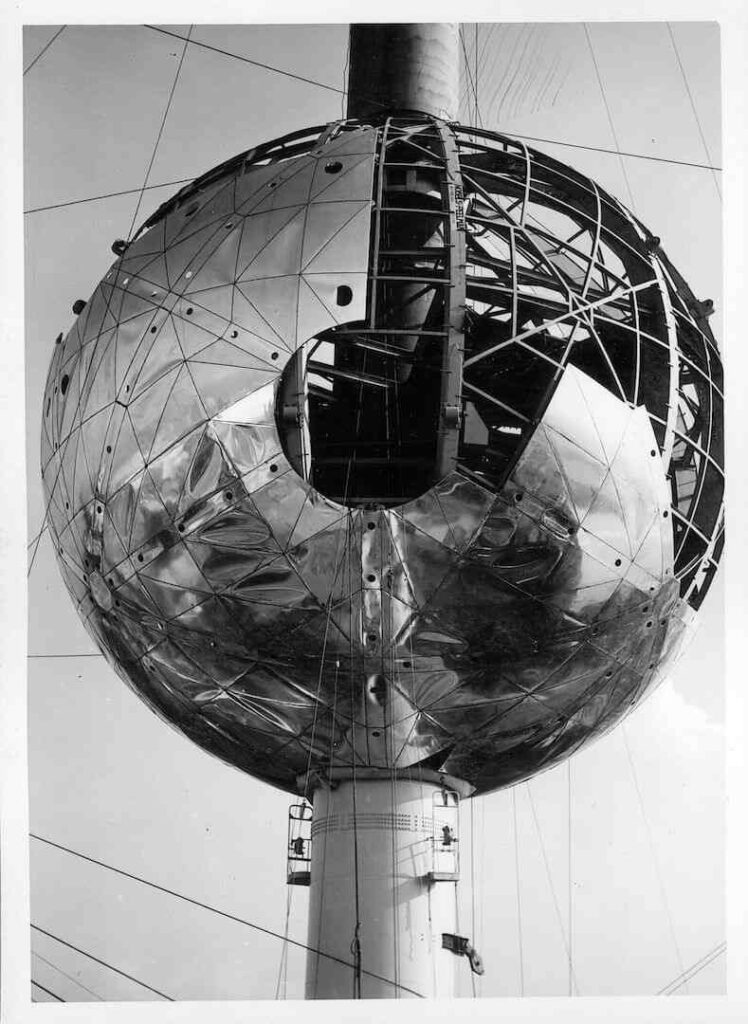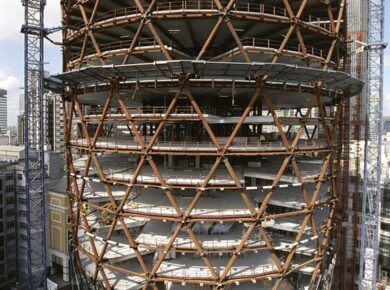André Waterkeyn (23/08/1917 – 4/10/2005): The father of the Atomium.
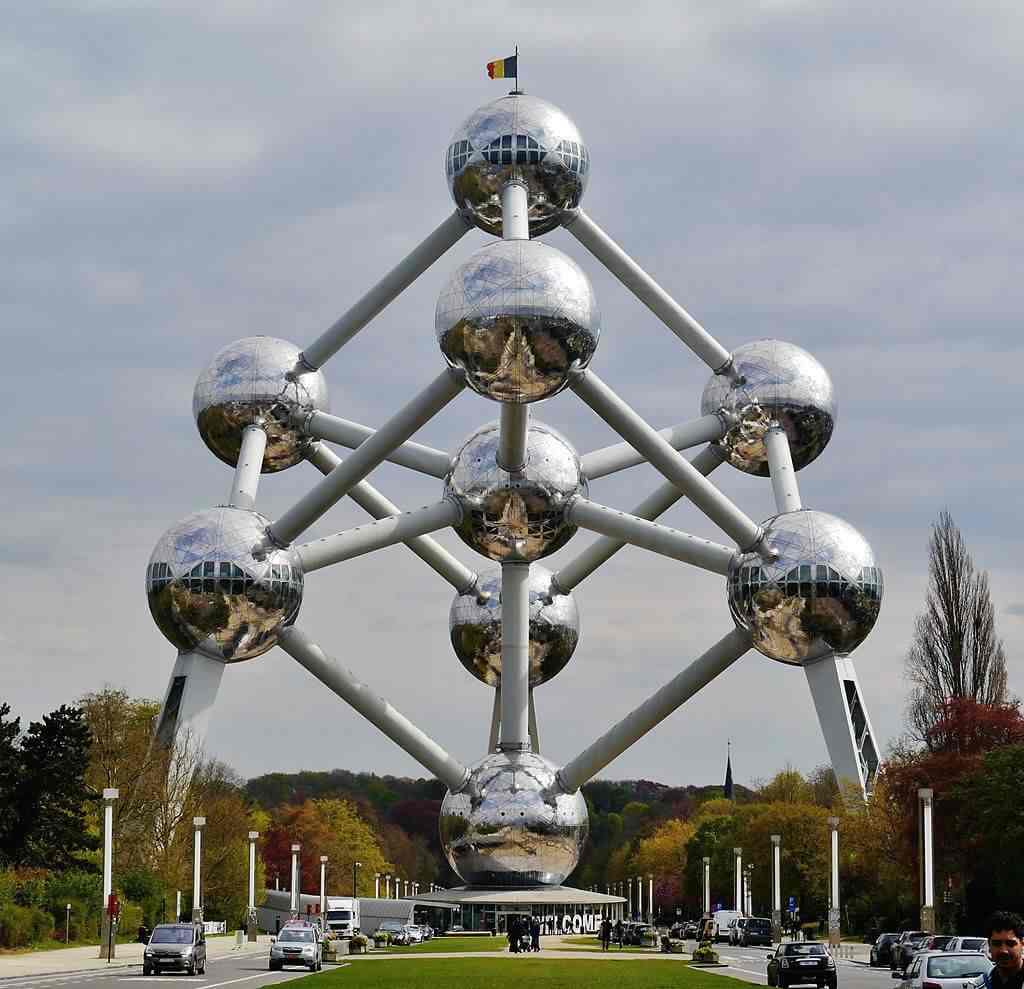
Image source: https://conixrdbm.com/portfolio_page/0425b_01/?lang=en
Waterkeyn had graduated as an engineer from the Catholic University of Leuven in 1942. He was working at Fabrimetal (the Belgian Metal Industry Association), today Agoria, in 1954 when he was asked by the Commissioner General of the 1958 World’s Fair to create a monument that would symbolize the craftsmanship of Belgium.
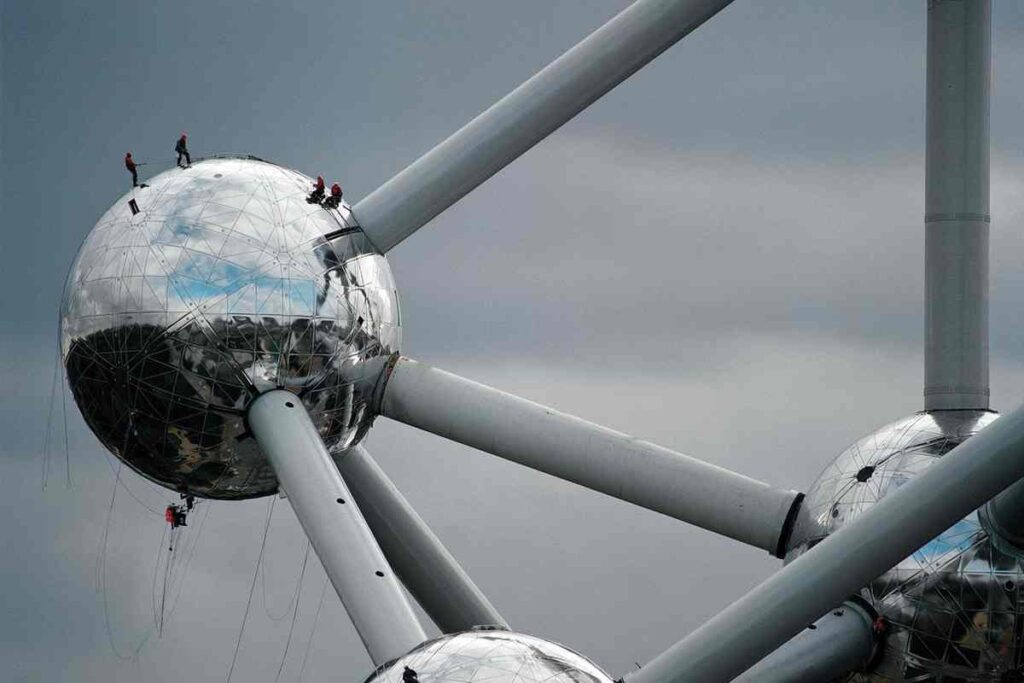
Image source: https://conixrdbm.com/portfolio_page/0425b_01/?lang=en
André Waterkeyn designed the Atomium, which represents the structure of an iron crystal. It has the cubic spatially centered structure, like pure iron at room temperature and under atmospheric pressure. The architectural aspects were managed by the architects André (1914-1988) and Jean Polak (1920-2012), brothers-in-law of the engineer.

Image source: https://conixrdbm.com/portfolio_page/0425b_01/?lang=en
The Atomium was intended as a temporary structure. It captured the imagination so much that it was retained as the emblem of Brussels, the still young capital of the EEC, the forerunner of the European Union.
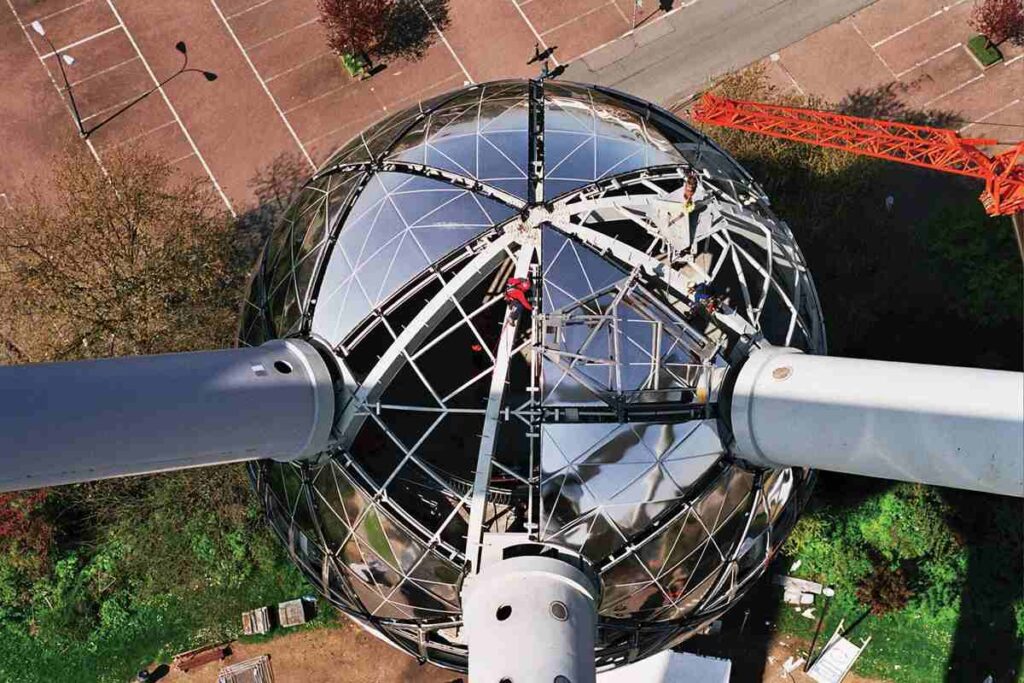
Image source: https://conixrdbm.com/portfolio_page/0425b_01/?lang=en
Over time, rain and wind systematically deteriorated the aluminum outer skin of the Atomium. The skin had aged to the point where a facelift no longer helped. The aluminum cover plates were all replaced with stainless steel plates.
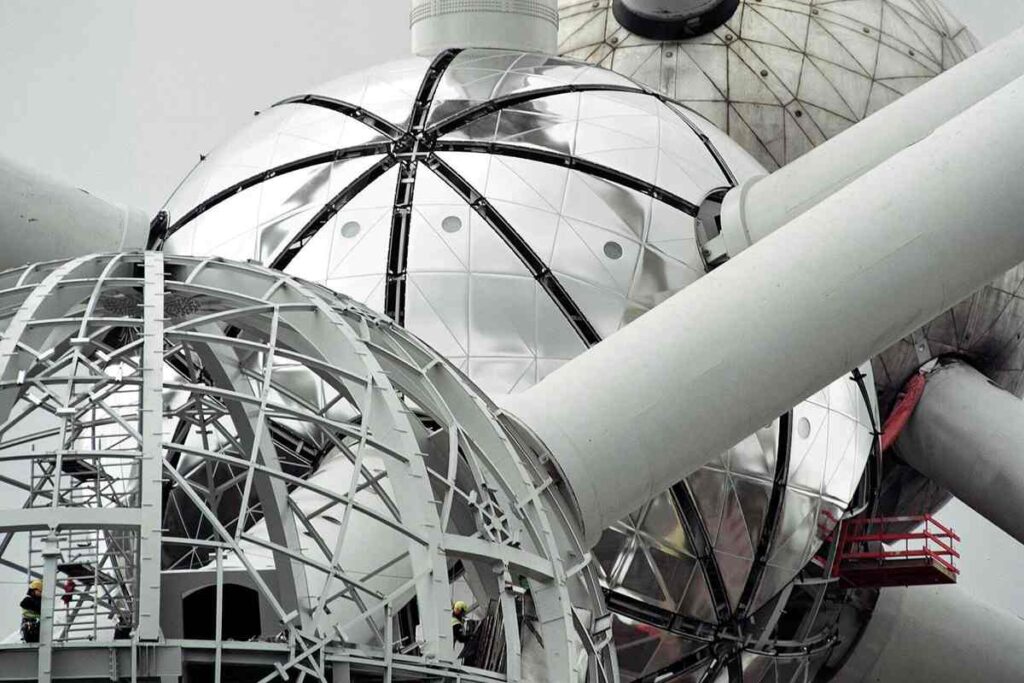
Image source: https://conixrdbm.com/portfolio_page/0425b_01/?lang=en
Stainless steel was chosen because of its better corrosion resistance, durability, ease of maintenance, respect for the deviations in deep drawing of the plates and better insulation against shock noise. The steel structure under the gleaming skin had also suffered. Wherever the steel had become too thin, reinforcements were made by welding new plates to it. Iemants BESIX CONIX

Image: Pieter.vandeweyer
Image source: https://atomium.be/construction_of_the_atomium
(Photo credits renovation: Marie-Françoise Plissart)
About the Author:
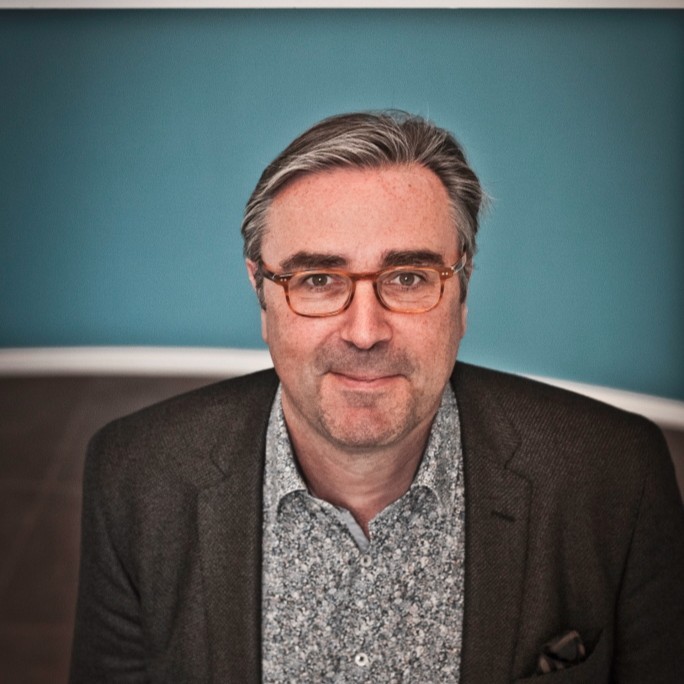
Bruno Dursin – Managing Director at Believe in Steel. Bruno has more than 30 years of experience in promoting steel & steel solutions. His clients benefit from his extensive network within the building industry.

